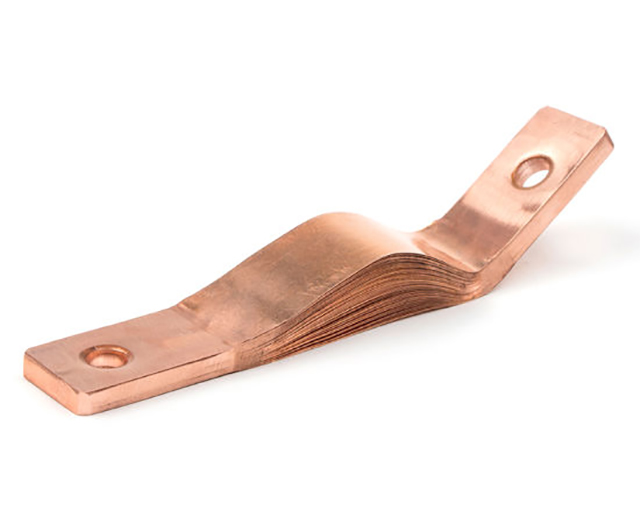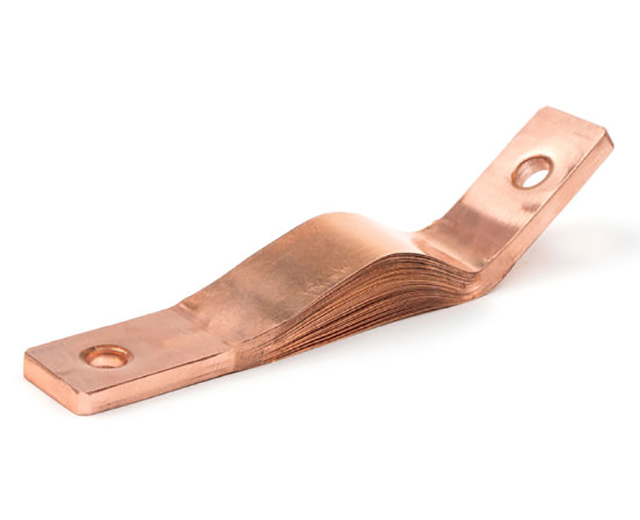

A Copper Busbar Current Collector is a solid metallic conductor designed to distribute high electrical currents efficiently in power distribution systems, battery assemblies, and various industrial applications. Typically, these collectors feature rectangular or flat cross-sections to maximize conductive surface area and minimize electrical resistance, ensuring reliable current transfer and thermal management.

Manufacturing involves:
Selecting industrial-grade copper alloys such as C11000 (ETP Copper) or C10100 (Oxygen-Free Copper) for superior conductivity and durability.
Shaping copper into precise rectangular or flat busbar profiles with thicknesses typically ranging from 2mm to 10mm depending on application.
Applying surface treatments like tin, silver, or nickel plating to improve corrosion resistance and contact quality.
Performing mechanical processing to achieve hardness levels from H00 (soft) to H04 (hard) through cold working.
Conducting rigorous quality control including conductivity, mechanical strength, and surface finish inspections.
Battery Systems: Connect individual lithium-ion cells in EV battery packs with thicknesses from 2-6mm and current ratings up to 600A continuous.
Power Distribution: Used in switchgear and substations, busbars sized from 30×5 mm to 200×10 mm can withstand short-circuit currents up to 100 kA for several seconds.
Renewable Energy Systems: Solar and wind installations employ 4-8 mm thick collectors with corrosion-resistant coatings for outdoor durability.
Industrial Machinery: High-current industrial environments such as electroplating plants (up to 50,000 A) and arc furnaces (water-cooled busbars for 100 kA+ applications).
Conductivity: 58.0–59.6 MS/m (100–101% IACS at 20°C), far exceeding aluminum.
Current Density: Supports 1,000–2,000 A/cm² continuous, peaks to 3,000 A/cm².
Temperature Resistance: Stable up to 300°C, annealing starts at 200°C.
Contact Resistance: Typically 5–15 μΩ with proper surface prep and installation.
Thermal Expansion: 17.0 × 10^-6 /°C, necessitating expansion joints.
Material Quality: ETP Copper (C11000) or Oxygen-Free Copper (C10100) with hardness levels adapted to application.
Calculate cross-sectional area based on current load and peak short-circuit currents.
Specify material grade and hardness to balance conductivity and mechanical strength.
Design for thermal expansion and include expansion joints.
Select suitable plating or coatings for environmental conditions.
Establish torque and fastening specifications, including Belleville washers to maintain contact pressure.
Consider installation environment for corrosion protection and thermal derating.
Implement surface roughness control (Ra 1.6–3.2 μm) for optimal contact.
Use electroless nickel plating or specialized anti-oxidation compounds for marine or harsh environments.
Maintain a minimum bending radius of 2× thickness to prevent work hardening.
Include infrared thermography monitoring for thermal anomalies.
Use hardware compatible with copper to prevent galvanic corrosion.
Apply current derating for ambient temperatures over 40°C.
Premium Materials: Use of C11000 and C10100 copper with proven conductivity and durability.
Advanced Manufacturing: Precision forming, plating, and surface treatment to ensure low resistance and long service life.
Strict Quality Control: Electrical and mechanical testing to meet UL, IEC, and industrial standards.
Customized Solutions: Tailored sizes, thicknesses, and plating for diverse industry needs.
Comprehensive Support: Technical assistance from design through installation and maintenance.
Wide Industry Experience: Supplying battery systems, power distribution, renewable energy, and industrial machinery sectors globally.
Q1: What materials are used for copper busbar current collectors?
A1: Common materials include C11000 (ETP Copper) with ≥99.9% purity and C10100 (Oxygen-Free Copper) for sensitive applications, chosen for their excellent electrical conductivity and thermal stability.
Q2: What current densities can copper busbar current collectors handle?
A2: They can continuously carry 1,000 to 2,000 A/cm², with short-term peaks up to 3,000 A/cm² depending on design and cooling.
Q3: How should copper busbar current collectors be maintained?
A3: Regular cleaning with isopropyl alcohol, oxidation removal using fine abrasives, torque rechecking, and thermal monitoring are recommended to ensure optimal performance.
Q4: What surface treatments improve copper busbar durability?
A4: Tin, silver, or electroless nickel plating significantly enhance corrosion resistance and electrical contact reliability, especially in harsh or marine environments.
Q5: How do I prevent thermal expansion issues in long busbar runs?
A5: Design expansion joints according to thermal expansion coefficients (~17×10^-6/°C) and maintain recommended spacing and bending radii during installation.